

Staying Safe: 4 Design Solutions for Sewage Lagoons
By Rika Lashley, PE
One of the first things that comes to mind when designing a new or rehabilitated lagoon is treatment capacity. As engineers we often focus on functionality first. However, equally important is the ability to safely construct, operate, and maintain the facility.
Addressing lagoon safety measures early during design can also help during construction and installation of the lagoon liner and equipment. There are several elements that can be incorporated into the design of a new lagoon (or installed during the upgrade of an existing lagoon) to facilitate safe access where needed and assistance if an accident occurs—because no one wants to take a swim in a sewage lagoon due to lack of safety measures!
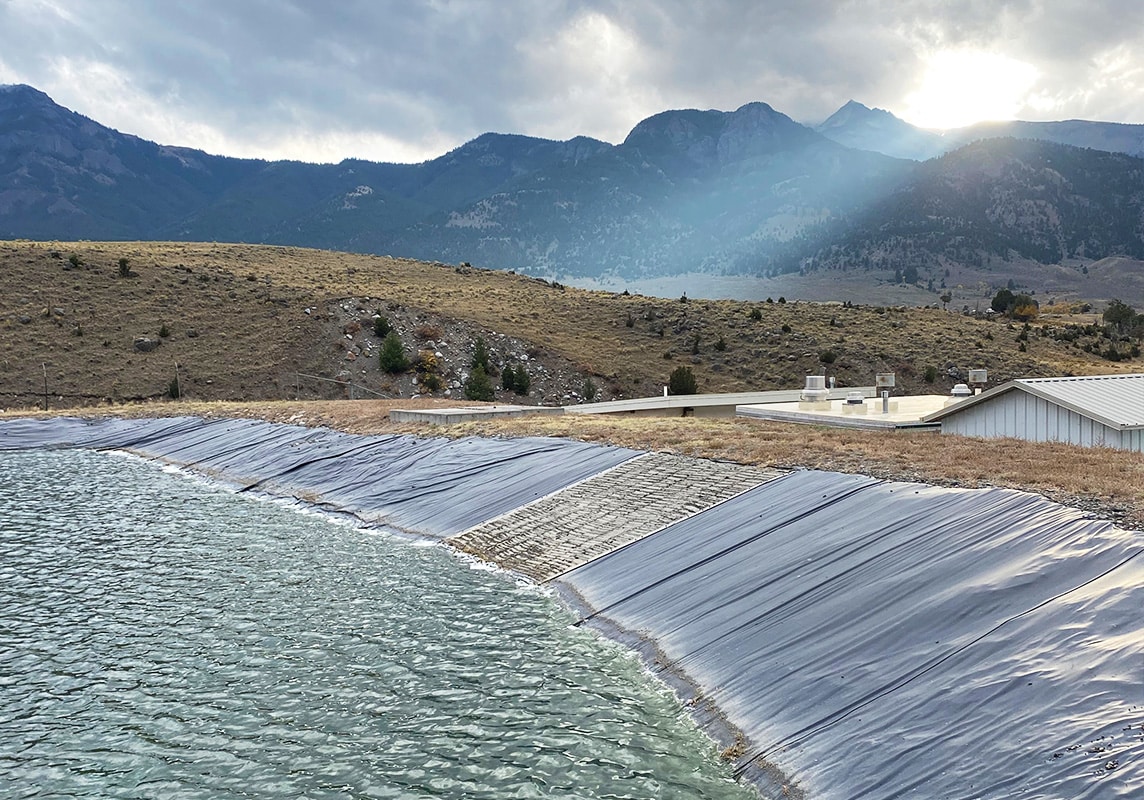
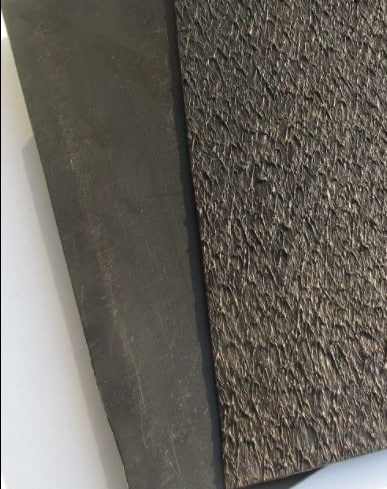
1. Lagoon Liners
Liners are available in a wide variety of materials. The most common liners are reinforced polypropylene (RPP) and high-density polyethylene (HDPE). RPP—typically specified with a thickness of 45 mil—is more flexible and offers installation advantages over HDPE. RPP can be delivered to the site in larger panels than the HDPE version and is not as heat sensitive with respect to material expansion and shrinkage. However, RPP has a very smooth surface which is almost shiny and very slippery. If accessing safely by foot is an important decision-making factor, RPP may score low for your project.
HDPE is usually specified with a thickness of 60 mil and is comparatively more rigid. While installation is somewhat more difficult than RPP liners due to their rigidity and smaller delivered panel size, designers often prefer HDPE for its marginally lower material cost. As an additional safety feature, it also comes in a textured variety that provides more grip for foot traffic. If design aspects or construction constraints allow for use of HDPE, consider specifying the textured type. It is slightly more expensive than the smooth variety but goes a long way to prevent slip-and-fall accidents during construction and operation of the facility.
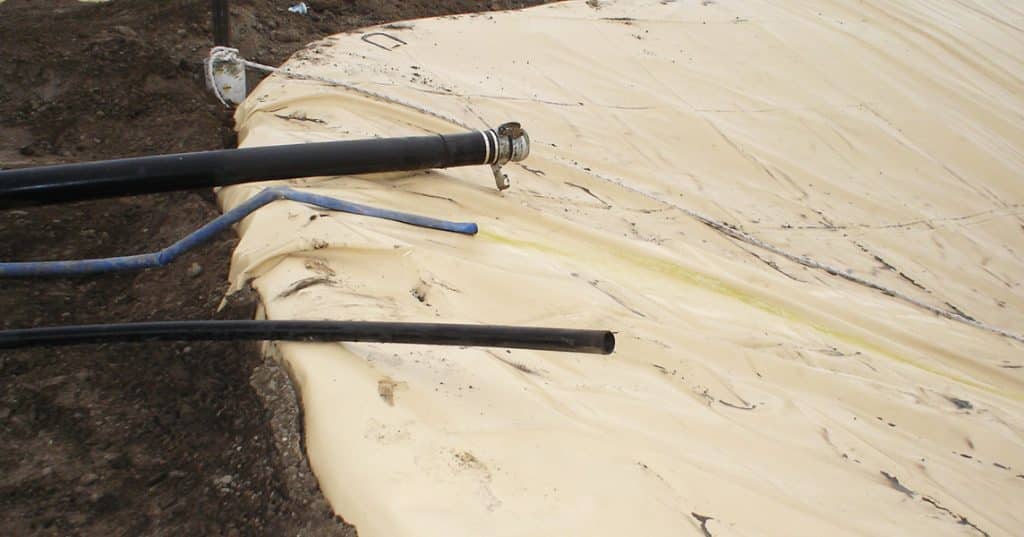
2. Lagoon Safety Ropes
Safety ropes have been a staple of lagoon design since synthetic liners were first installed. They are typically installed at intervals around the lagoon and should not exceed a spacing of about 50 feet apart. The ropes can be weighted down with anchors or slipped through loops of liner material that are attached to the liner and tied off on the bottom. Safety ropes are used to hold on to when accessing the bottom of the lagoon during construction or when maintenance and operations personnel need to collect samples on the water’s surface. In an operating lagoon, the victim of a slip-and-slide accident would need to swim to a safety rope to help them exit.
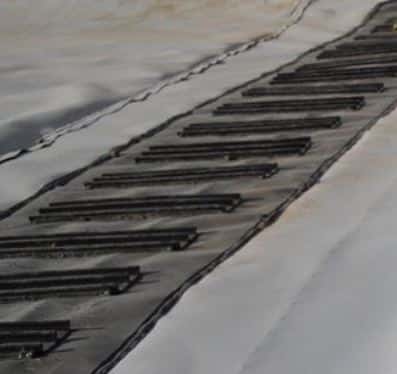
3. Ladders
Liner manufacturers offer ladders made of extrusion-welded materials to the liner itself. Some ladders are used with a safety rope while others have handholds and do not necessarily require an additional rope. These ladders can be installed when a lagoon is newly lined.
However, welding anything to an old liner is typically not recommended when retrofitting an existing lagoon. In these cases, you may consider tying old car tires together and anchoring them at the top of the berm. These ladders provide greater safety when accessing synthetically lined lagoons than safety ropes, but neither are generally meant for regular access to the water surface.
4. Concrete Ramps
If regular access to the lagoon’s water surface is needed, installing a concrete ramp may be the way to go. In this case, a concrete ramp can be poured in place during construction and made sturdy enough for heavy vehicles as needed during sludge removal. A synthetic liner is then fastened to the concrete with batten bars. These are aluminum or stainless-steel brackets that are bolted to the concrete, sandwiching the liner edge and sealant between the batten bar and the concrete ramp. While this is a common method for sealing liners along concrete structures, keep in mind this connection does introduce an opportunity for leakage.
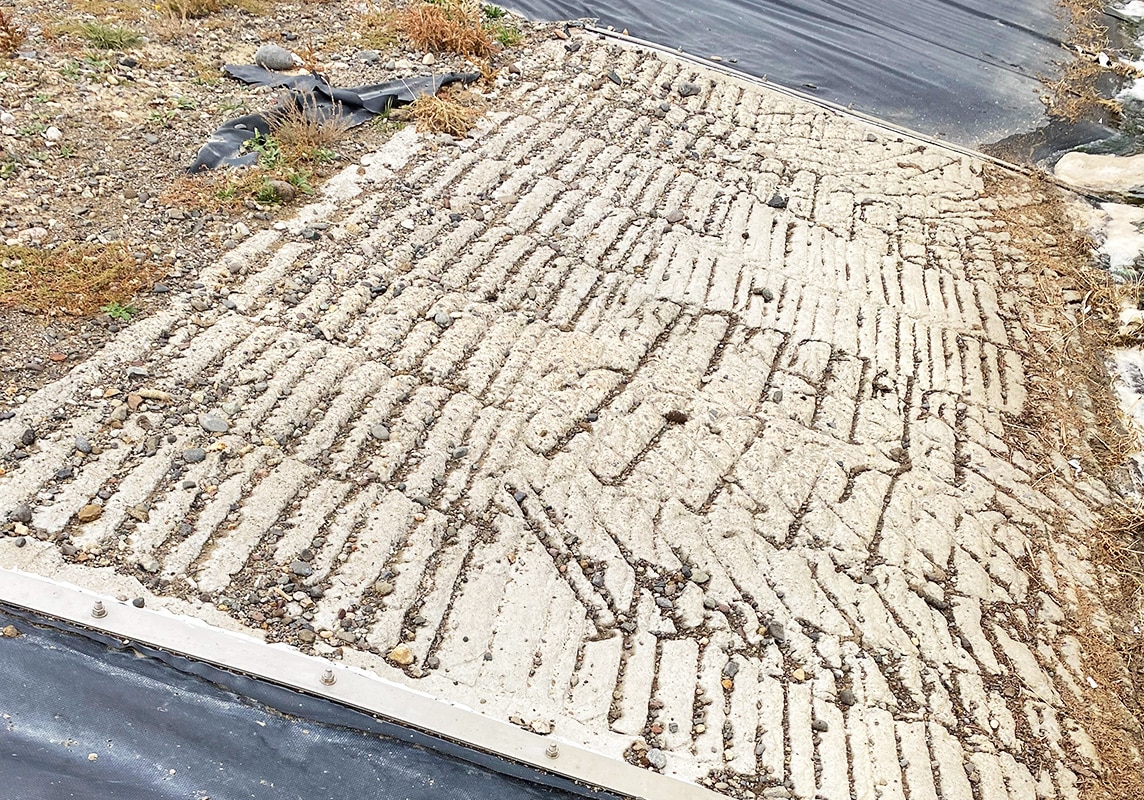
If providing access for heavy vehicles is not needed, a modular, concrete boat ramp can be installed on top of an uninterrupted liner. To minimize future damage, it is best to use a double layer of liner under the ramp. The boat ramp, which will need to be anchored at the top of the berm, consists of individual concrete boards connected with stainless steel cable or brackets that come in different widths and lengths. A ramp should be selected that is most suitable for its use—either for foot traffic or to launch a boat or pontoon platform to service equipment in the lagoon or perform sludge judging.
Design for Safety
If you have a project involving lagoon design or rehabilitation and are interested in more details about safety features, please contact me. Or if you are an operator and have invented a creative means to make access to your lagoon safer, please contact us as we would be interested in your safety measures and will share your ideas here.
Learn More: Read about how to stay safe around a wastewater lagoon

